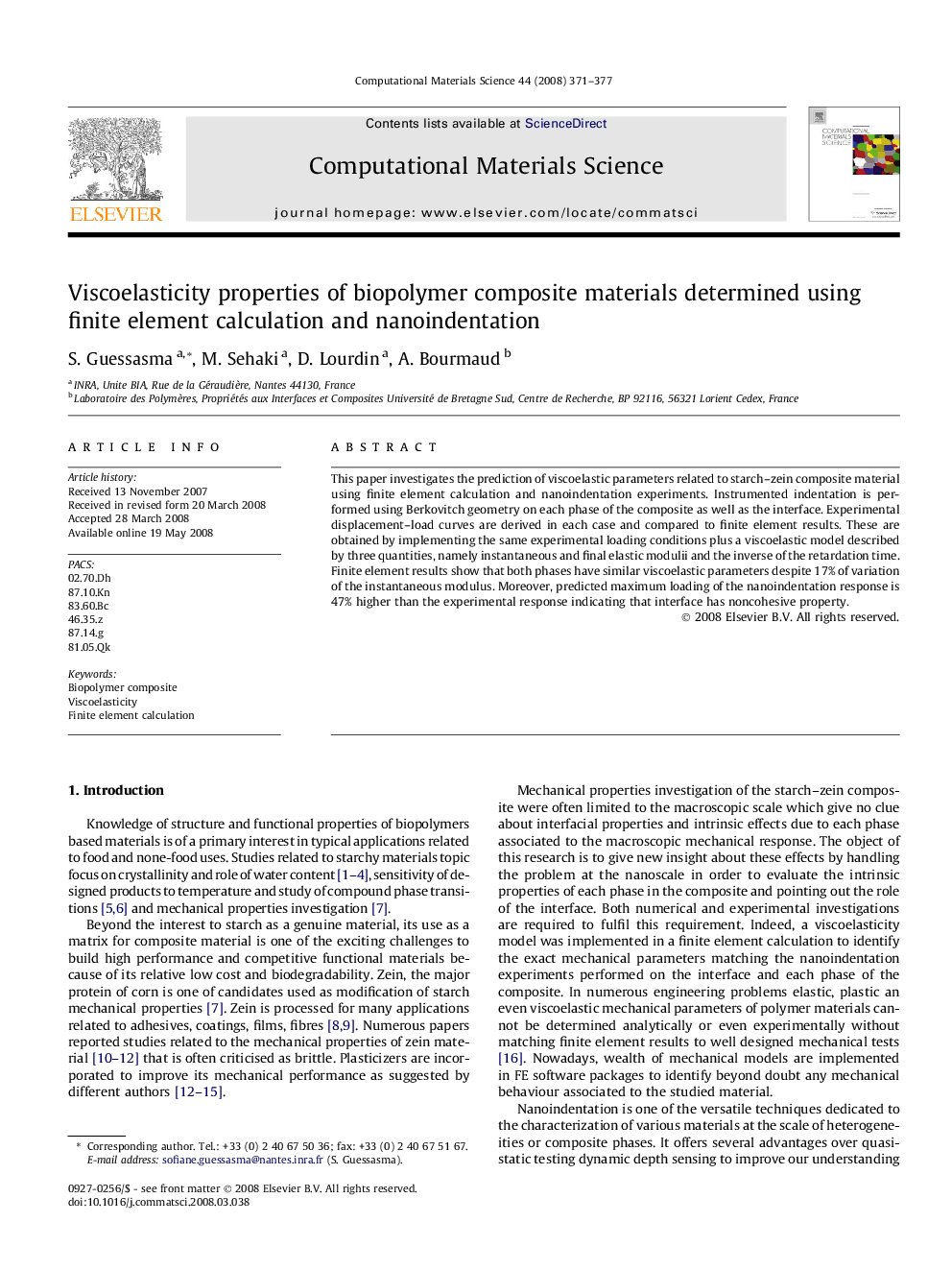| Article ID | Journal | Published Year | Pages | File Type |
|---|---|---|---|---|
| 1563198 | Computational Materials Science | 2008 | 7 Pages |
This paper investigates the prediction of viscoelastic parameters related to starch–zein composite material using finite element calculation and nanoindentation experiments. Instrumented indentation is performed using Berkovitch geometry on each phase of the composite as well as the interface. Experimental displacement–load curves are derived in each case and compared to finite element results. These are obtained by implementing the same experimental loading conditions plus a viscoelastic model described by three quantities, namely instantaneous and final elastic modulii and the inverse of the retardation time. Finite element results show that both phases have similar viscoelastic parameters despite 17% of variation of the instantaneous modulus. Moreover, predicted maximum loading of the nanoindentation response is 47% higher than the experimental response indicating that interface has noncohesive property.
